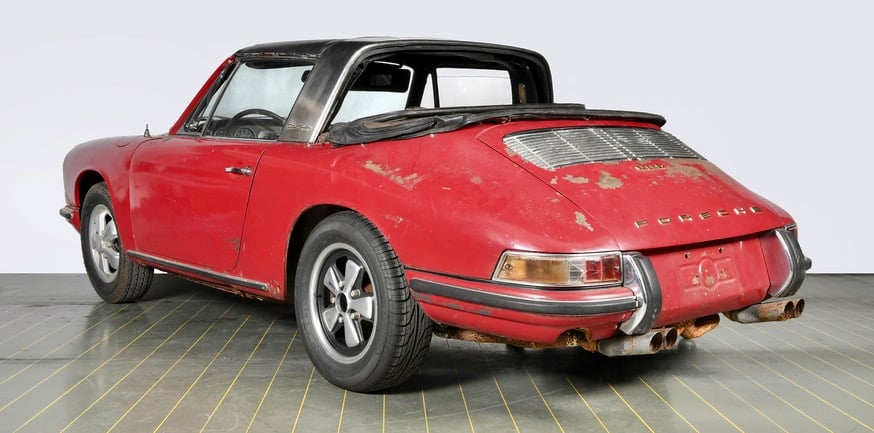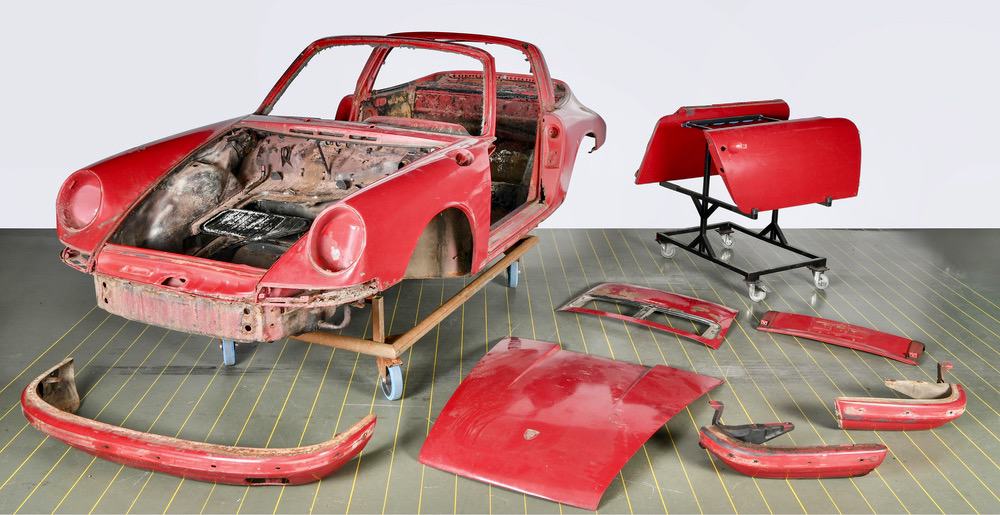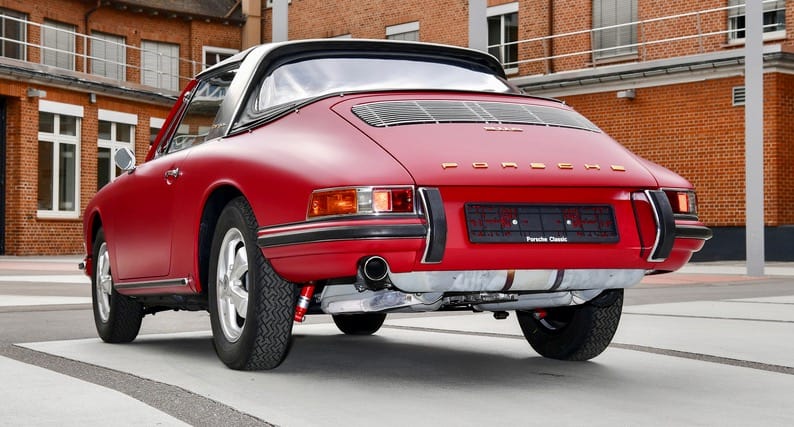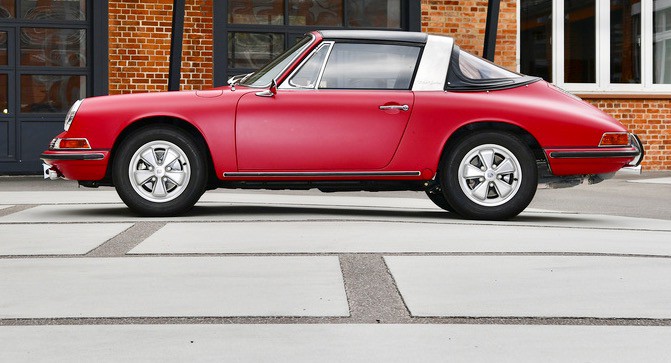After spending nearly 40 years under a plastic tarpaulin in a doorless garage in the United States, the first Porsche 911 S Targa delivered in Germany has been restored and is back on the road after a 3-year restoration.
Nice story, obviously, but what makes this restoration different is the fact that it was done by the Porsche Classic Factory Restoration team at Porsche AG in Stuttgart.
“From a spectacular barn find to a collector’s item with patina that is as good as new,” reports the news release from Porsche.
“The restoration is a special project for us – after all, one of the first 911 Targa models has found its way back to Zuffenhausen,” the news release quotes Uwe Makrutzki, head of the Porsche Classic Factory Restoration team.
Makrutzki said the car’s owner apparently parked it in a doorless garage, put plastic over it and “had seemingly just forgotten about the car,” which had been delivered to a dealership in Dortmund on January 24, 1967.


“As a soft-window version, this early Targa has a soft rear window instead of the glass window that was available from 1967,” Porsche noted. “Only 925 units with S engine, short wheelbase and soft window were produced by Porsche between the end of 1966 and 1968. “The rare sports car was in a wretched state,” the report continued. “After serving as a demonstration car for the Porsche dealer, it was sold to a customer in the USA in 1969. The open-top 911 was then parked in the above-mentioned garage in Long Beach (New York State) from 1977 to the end of 2016.
“On the positive side, it was complete – which was particularly pleasing in view of its many optional extras such as Webasto auxiliary heater, tinted windscreen, Blaupunkt Köln radio, leather seats, halogen fog lamps and outside thermometer.
“The philosophy of the Porsche Classic Factory Restoration department is to restore the vehicles so that they as true to the original as possible. The search for authentic small parts such as cable clamps, rubber grommets and sealing plugs for the 2.0-liter S engine proved to be difficult.
“Replica parts from third-party suppliers are out of the question for us,” said Makrutzki. “Luckily we can reach into our ‘treasure chest’ in such cases.”

That trove includes a warehouse with more than 60,000 genuine spare parts. Porsche also noted that its internal restoration shop also has access to original tools, frame gauges, data sheets and technical drawings.
“The second great challenge was the outer skin of the Targa roof,” Porsche said.
“Today’s material has a different grain and is more robust than the original,” Makrutzki explained. “But our customer did not like it. For this reason, we had a visually identical cover produced especially for this project. In spite of their decades of experience, our experts still had to work gradually towards achieving the right finish, that is to say its bonding and stitching. This has the advantage that a suitable, contemporary Targa roof cover is now already in stock for the next 911 Targa soft-window model.”
The client also wanted chassis and other parts not powder coated as is done today but with the two-component paint in black as was used in 1967. Speaking of paint, the car was repainted in its original Polo Red and was covered with a protective film because “the owner does not just want to collect the sports car but also drive it.”


The Targa’s owner already has his next project at the Porsche Classic workshop, a very early 928.
Porsche said its Classic workshop, with a staff of 30, does eight complete restorations a year but also does “partial restoration work,” such as an engine or transmission, on around 70 other vehicles. The company noted that its Classic workshop is the only such automaker’s facility in the world that puts cars being restored through the same cathodic dip coating line as is used in the factory paint shop for new vehicles.
“Cathodic dip coating guarantees complete, highly resistant priming right into the last fold,” the company said, adding that each layer of paint applied to the vehicle is followed by a drying period that last three weeks.






As a child I saw a purple one in Armstrong Redwoods in 1969 and puzzled as to why there was a soft rear window on only that one and how you could remove the glass, put in the soft window and then switch back to glass!
As a former body tech/painter it looks good, have to question the finish of outside paint looking dull